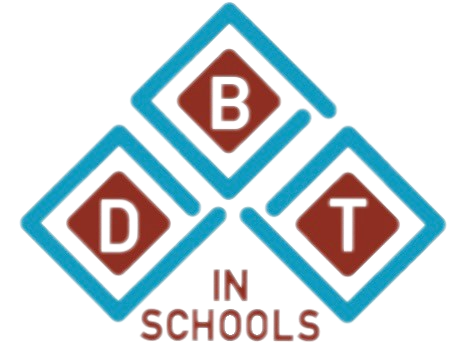Creating a Supportive School Environment: How DBT Can Foster a Positive School Culture
In today’s ever-changing educational landscape, schools are more than just places for academic learning—they are communities where students develop the emotional, social, and interpersonal skills that shape their futures. A school’s culture plays a significant role in student success and mental well-being, and Dialectical Behavior Therapy (DBT) skills provide a powerful framework for fostering a positive, supportive environment.
By integrating DBT STEPS-A (Skills Training for Emotional Problem Solving for Adolescents) into classrooms, schools can equip students with tools to manage emotions, build strong relationships, and cultivate a culture of respect, resilience, and connection.
The Role of DBT in Building a Positive School Culture
A positive school culture isn’t just about preventing conflict—it’s about actively creating an environment where students feel heard, respected, and empowered. DBT provides practical, skills-based approaches that help students and educators foster emotional intelligence and effective communication.
Here’s how key DBT principles and skills can transform school culture:
1️⃣ The Power of Perspective: Dialectical Thinking
Dialectical thinking—the ability to hold multiple perspectives and find a middle path—helps students navigate challenges and conflicts with openness and flexibility.
🔹 Perspective-Taking: Encouraging students to see different sides of an issue fosters empathy and problem-solving. For example, a student upset with a strict grading policy might explore the teacher’s perspective on fairness and high expectations.
🔹 Validation: Recognizing and validating differing viewpoints can reduce misunderstandings and build trust among students and staff.
🏫 In Practice:
Encourage class discussions that explore different perspectives.
Use "I see both sides" prompts to help students practice finding balanced viewpoints.
Teach students to validate their own and others’ experiences, creating a culture of mutual respect.
2️⃣ A Foundation of Compassion: The Nonjudgmental Stance
Judgment—of self, others, or situations—can fuel emotional reactivity and conflict. A nonjudgmental stance helps students and educators approach challenges with curiosity and compassion rather than criticism or blame.
🔹 Reducing Self-Judgment: A student struggling with math can shift from “I’m just bad at this” to “I’m finding this challenging right now, but I can improve with practice.”
🔹 Improving Communication: A teacher can reframe a disciplinary conversation from “You never follow instructions” to “I noticed you struggled with the assignment today—what support would be helpful?”
🏫 In Practice:
Encourage self-compassion by teaching students to recognize judgmental thoughts and reframe them.
Use nonjudgmental language when addressing challenges with students.
Model curiosity over criticism in classroom discussions.
3️⃣ Building Resilience with DBT Skills
A supportive school culture helps students develop the tools they need to manage emotions, handle stress, and build confidence. DBT skills provide a roadmap for emotional resilience and interpersonal effectiveness.
Mindfulness: Helping Students Stay Present
Why It Matters: Mindfulness helps students reduce impulsivity, increase focus, and build emotional awareness.
In Practice: Start the day with a 1-minute breathing exercise or “observe-describe-participate” activities to promote present-moment awareness.
Distress Tolerance: Handling Stress Without Escalation
Why It Matters: Equips students with healthy coping strategies instead of avoidance or outbursts.
In Practice: Teach Self-Soothe with the Five Senses (listening to music, deep breathing, holding a calming object) to help students regulate emotions.
Emotion Regulation: Shaping Emotional Responses
Why It Matters: Helps students reduce emotional reactivity and make decisions with a clear mind.
In Practice: Use Check the Facts exercises to help students evaluate whether their emotional response fits the situation.
Interpersonal Effectiveness: Strengthening Peer Relationships
Why It Matters: When students communicate effectively and maintain self-respect in conversations, classroom conflicts decrease.
In Practice: Teach DEAR MAN for advocating needs and FAST for maintaining self-respect while interacting with peers.
Creating Connection: DBT in School Relationships
A supportive school culture isn’t just about what students learn—it’s also about how they interact with teachers, peers, and staff. DBT encourages healthy communication and collaboration through validation, problem-solving, and relationship-building.
👥 Peer-to-Peer Support: Teaching DEAR MAN and GIVE skills can reduce bullying and increase peer connection.
📚 Teacher-Student Relationships: Educators trained in DBT can model validation and effective communication, creating trust-based learning environments.
🤝 Collaborative Problem Solving: A DBT-informed approach helps schools address conflicts constructively rather than punitively.
🏫 In Practice:
Encourage classroom agreements that emphasize respect and understanding.
Teach students how to navigate disagreements with fairness and honesty.
Provide consistent validation for students struggling emotionally or academically.
The Ripple Effect: Benefits of a DBT-Informed School Culture
When DBT STEPS-A is embedded into a school’s framework, everyone benefits—from students to teachers to the broader community.
🌟 Improved Mental Health: Students equipped with DBT skills can handle stress more effectively and reduce anxiety.
📈 Enhanced Academic Performance: Emotionally regulated students are better able to focus on learning.
🤝 Stronger Community Ties: A culture of validation, communication, and self-respect strengthens student and staff relationships.
Bringing DBT STEPS-A to Your School
Creating a positive, skill-based school culture starts with equipping educators and counselors with the right tools.
🌱 Spring & Summer enrollment for DBT STEPS-A training is now open! 🎉
📂 What You’ll Gain from Training:
✔️ Comprehensive lesson plans & printable handouts to integrate DBT into your school.
✔️ Ongoing support in our Community Hub to help with implementation.
✔️ Hands-on training so you feel confident teaching DBT skills to your students.
By integrating DBT principles into your school, you’re not just teaching students how to cope—you’re shaping a school culture where everyone thrives.
🔗 Register Now and be part of the movement to create healthier, more resilient school communities! 🚀
